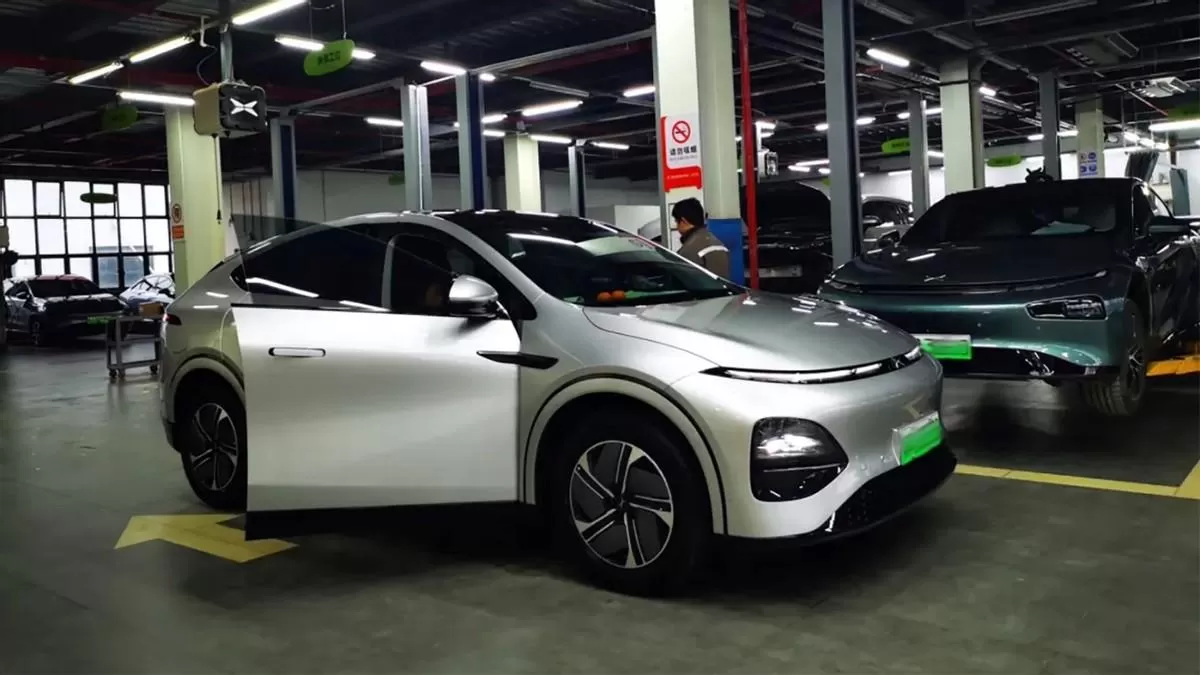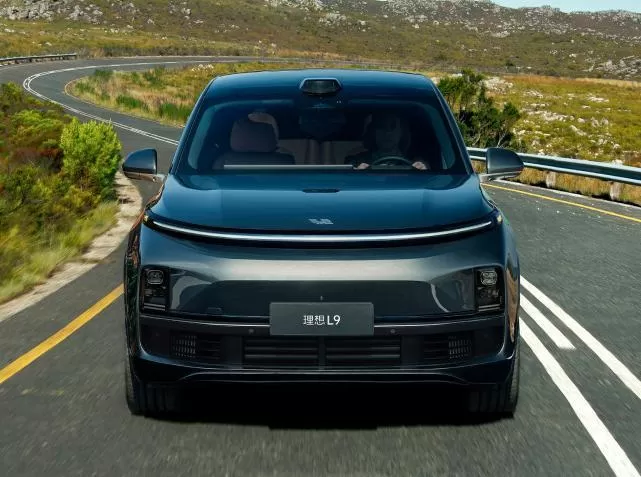Before the launch event of the MONA M03. the first thing I heard from the Xpeng team was, "This time, we won't make any mistakes."
Once again, they are filled with confidence—this is the fourth cycle in two years, using almost the same rhetoric, and once again offering a surprise in pricing. Within 52 minutes of the announcement, pre-orders surpassed 10.000.
Yes, there were two major mistakes in the past two years. Xpeng went from being the top seller among new energy carmakers to falling out of the top 10. He Xiaopeng really has no room to make any more mistakes.
The first major mistake was the unreasonable pricing and SKU choices for the Xpeng G9. which not only stalled the momentum of the Xpeng P7 but also led to a direct failure in the premium market. The second major mistake was the Xpeng G6. which initially captured significant market interest, garnering a large number of orders upon its release. However, due to insufficient production capacity and inadequate early preparation, a wave of order cancellations ensued. Although the orders could have supported monthly sales exceeding 10.000 units, the highest sales figure in the past 12 months was just 8.750 units in November 2023.

"When an avalanche occurs, no snowflake is innocent." This saying fits Xpeng perfectly. Just days before the launch event, there were new developments in the car insurance industry: Xpeng had to lower its car damage insurance rates due to the high accident rate associated with its intelligent driving systems and issues with calculating the overall vehicle repair ratio. Without lowering the rates, Xpeng could have faced familiar problems, such as the risk of being refused insurance coverage for new energy vehicles. During the event, He Xiaopeng expressed gratitude for the support received over the past 10 years, especially for the understanding and support shown during their mistakes.
However, Xpeng's early adopters, who were the first to use LiDAR with the Xpeng P5. are now experiencing the worst intelligent driving performance within the Xpeng ecosystem. Since 2023. there have been continuous price cuts, which have come at the expense of users. Additionally, in November 2023. thousands of Xpeng P7 owners raised concerns about OTA (over-the-air) updates.
Even small mistakes are happening too frequently. For instance, during Xpeng’s 10th-anniversary celebration and the launch of the MONA M03. the event was announced to start at 7:00 PM but was delayed by 10 minutes once again.
The Final Path: Learning from Huawei, BYD, and NIO
Xpeng's only way out is to make bold moves. The technological and market choices for the Xpeng MONA M03 actually borrow simultaneously from Huawei’s HarmonyOS, BYD’s and NIO’s business logic.
In the two-hour event, He Xiaopeng spent 30 minutes reflecting on his 10 years in the car-making business, delivering a core message: Xpeng is a pioneer, a trailblazer, and a company that perseveres. They want to build different, fun cars, so they were the first to change the logic of the cockpit and intelligent driving, achieving many innovations. After the launch, in several polls asking, "Which statement by He Xiaopeng impressed you the most during this event?"
Most people chose the statement, "Xpeng is feeling its way across the river, while others are feeling their way across Xpeng."
In terms that young people would understand, the high EQ interpretation is that He Xiaopeng displayed his stubbornness and persistence during the event. The low EQ interpretation is that he is as stubborn as ever, willing to make customers or the market pay the price for something he believes in.

"We’ve been working on flying cars for nine years, and everyone said it was impossible, but now more and more companies are interested." This is He Xiaopeng’s example of his own persistence. When it comes to flying cars, this logic might hold. But when it comes to the automotive consumer market, the four "firsts" highlighted in Xpeng's presentation—first to achieve high-speed intelligent driving, first in urban intelligent driving, first in multi-city mapless intelligent driving, and first to land an end-to-end large model in China—only demonstrate Xpeng’s innovative capabilities and He Xiaopeng’s persistence. However, with the original team gradually leaving, frequent executive shake-ups, and inconsistent market performance, this does not necessarily translate to market leadership. Many people, including myself, hoped Xpeng could gain a first-mover advantage like Intel or Amazon. But the reality is clear: Huawei is now recognized as the leader in intelligent driving in China, both in public opinion and actual capability. Xpeng is struggling to even maintain monthly sales of 10.000 units, rendering the four "firsts" somewhat hollow.
In contrast, successful examples abound. Among the three major new energy carmakers, Li Auto successfully secured a first-mover advantage in the family car segment, NIO secured an advantage in battery swapping and premium branding, and Huawei’s HarmonyOS is gaining momentum. All three have managed to expand their first-mover advantages.
So what does Xpeng have?
The answer is that it has no choice but to engage in a price and marketing battle since its technology has failed to break through.
"The price is fine, I've placed my order, it's irresistible!" When the starting price of the Xpeng MONA M03 was announced not to exceed 135.800 RMB, Zhang Lei was still hesitating about whether to visit the experience store. If the M03’s price wasn’t attractive, it would have made more sense to buy a Xpeng P7 or G6.

But as the prices were announced—119.800 RMB, 129.800 RMB, and 155.800 RMB—Zhang Lei placed his order without hesitation. What convinced him was He Xiaopeng's statement during the event: "At 130.000 RMB, most cars on the market offer less than 600 kilometers of range."
Zhang Lei’s consumer behavior reflects that of many others. According to current pre-order data, the mid-range version, priced at 129.800 RMB with a 620-kilometer extended range, accounts for over 70% of orders. The performance is impressive, but He Xiaopeng must have mixed feelings.
At the event, He Xiaopeng emphasized that this car offers the only advanced intelligent driving system under 200.000 RMB. In the post-event briefing, he explained that advanced intelligent driving refers to the ability to achieve "assisted driving on highways and in urban areas, advanced parking, and rapid updates." However, the pre-order data suggests that the first batch of consumers may not be as interested in Xpeng's signature intelligent driving technology as expected.

Nevertheless, some people have made different choices from Zhang Lei. Their experiences and perspectives lead them to wait and see.
One onlooker quipped, "If a MacPherson suspension and torsion beam setup can create a blockbuster, does that mean Chinese cars are regressing? Should we all abandon independent suspensions?" This is a common critique of the Xpeng MONA M03 and a persistent disdain from the internal combustion engine era.
Potential customers with scientific backgrounds are questioning whether the numbers add up. Xpeng uses BYD’s Fudi Blade Battery (a detail He Xiaopeng did not mention at the event), with a battery capacity of 62.2 kWh, motor output of 218 horsepower, and 250 N·m of torque. In contrast, the BYD Dolphin Knight Edition, also using the Blade Battery, has 204 horsepower, 310 N·m of torque, and a battery capacity of 60.48 kWh. The M03’s battery is only 1.72 kWh larger, yet its CLTC range is 100 kilometers longer, which defies logic. The conclusion? Either BYD or Xpeng has a problem.
Potential Xpeng customers around me are wondering whether Xpeng has truly fixed its previous issues. No one can answer that for sure; only time will tell. The issues to fix include insufficient production capacity, price cuts shortly after launch, and not getting caught up in over-promising future features. He Xiaopeng's response at the briefing was that they’ve done a lot of work on production capacity this time and expect monthly sales per vehicle to exceed 10.000 units, with regular versions of the M03 being delivered in September. The M03 MAX version, with its advanced intelligent driving system, will begin deliveries after the 2025 Chinese New Year, five months away, but no one can guarantee that it will still lead in technology by then.
After all, it's clear to everyone that the Xpeng MONA M03 has borrowed strategies from BYD, Huawei, and NIO, and its competitors will likely include at least those three companies.
After 10 Years of Car Manufacturing, He Xiaopeng's Business is Still Not Profitable
Copying others' strategies, following BYD’s logic of price-performance, aligning with Huawei’s HarmonyOS for intelligent driving, and adopting NIO’s approach of cascading technology from premium to lower tiers.
But there’s a problem: He Xiaopeng claims that the MONA M03 is profitable, and the low pricing is due to significant technological innovations that have reduced costs.
The issue is that Xpeng has never demonstrated outstanding cost-reduction capabilities, something that is evident in companies like BYD, Geely, and Changan. Has Xpeng suddenly caught up with the industry leaders? This raises doubts. Aligning with Huawei is easy to understand, and following NIO’s approach makes sense because once the M03 MAX version is delivered after the Chinese New Year, it will soon face competition from NIO's third brand, Firefly, which offers intelligent driving.
But the question of whether Xpeng can achieve profitability still lingers.
Perhaps for most people, the first lesson learned in 2024 from the release of the Xpeng MONA M03 is this: in the fiercely competitive environment of the Chinese auto industry, you must not only survive but also try to prove that you can thrive.
There is a logical flaw that Xpeng must face—over 10 years of operation and still unprofitable. Although He Xiaopeng emphasizes the importance of balancing revenue and costs and announces that the M03 is expected to generate profits, he avoids the inconvenient truth that Xpeng's losses continue to widen.
In the second quarter of 2024. Xpeng's net loss widened to 2.8 billion RMB. The gap between revenue and expenses continues to grow. This is not only a challenge faced by Xpeng but also by many startups in China, including leading smart hardware companies. They lack profitable business models, strong profitability, and rely heavily on new capital to maintain operations.
Once their investors stop believing in their future growth, no matter how many cost-cutting measures they take, how they emphasize their technological advantages, or how they proclaim their management reforms, these companies will eventually struggle to sustain themselves.
If the MONA M03 sells well, Xpeng will need to rethink how it can stabilize profits and avoid the phenomenon of "the higher the sales, the less room to maneuver," otherwise, the end may come sooner than expected.
He Xiaopeng is aware of this. That’s why the new CFO from the U.S., arriving in early September, will directly confront Xpeng's profitability issue. This CFO's arrival not only brings capital market expertise but also has a strong background in cost control, demonstrating He Xiaopeng’s determination to address the fundamental issues within the company.
Yet, every time I think of this, I can’t help but wonder: does He Xiaopeng truly understand that one mistake could lead to the collapse of Xpeng? Given that he’s gone from a pioneer in the new energy vehicle industry to an underdog, will the company's board, including key investors like Alibaba, continue to give him the chance to make decisions and take responsibility? And how much tolerance do ordinary customers have left?
These are the questions that will determine whether Xpeng can navigate the challenges ahead or face the fate of so many other ambitious but ultimately unsuccessful startups.





